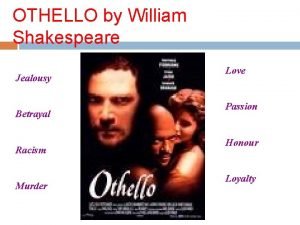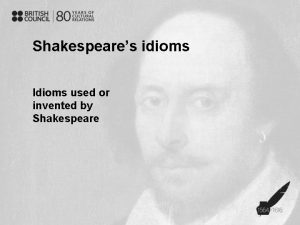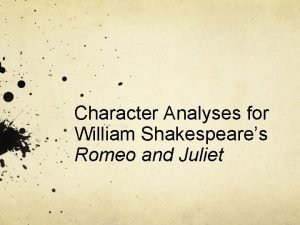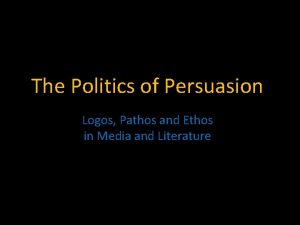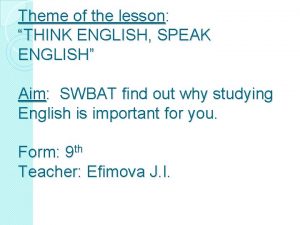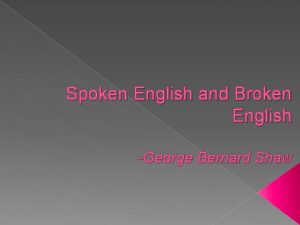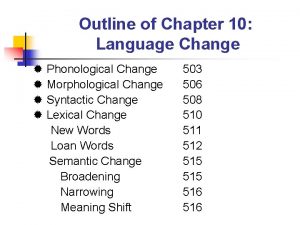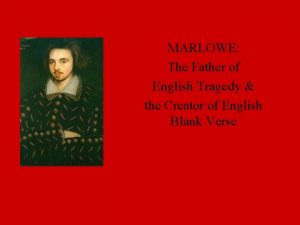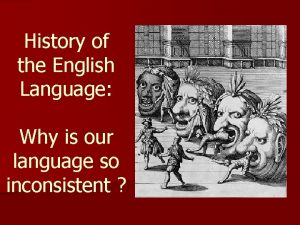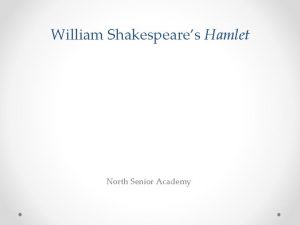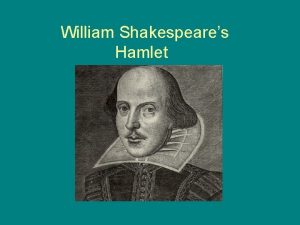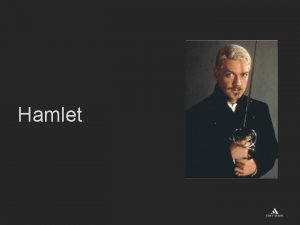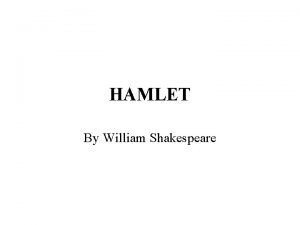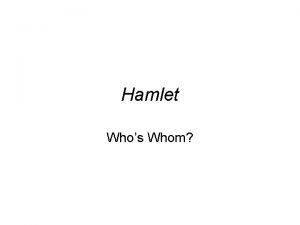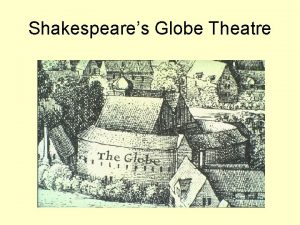Shakespeares Hamlet English 12 Universal Appeal of Hamlet












- Slides: 12

Shakespeare’s Hamlet English 12

Universal Appeal of Hamlet l “It is we who are Hamlet” (William Hazlitt, 1817).

Definition of a Tragedy l A play dealing with tragic events and having an unhappy ending, especially one concerning the downfall of the main character (www. oxfordenglishdictionaries. com)

Elements of Shakespearean Tragedy 1. 2. 3. 4. 5. 6. The tragic hero is a good or noble man Hero acts against established laws/moral codes Hero acts with noble, or well-intended, motives, but often makes a false moral choice Hero makes his decision to act because of deception and/or excessive noble pride Hero has a dramatic moment of choice Disaster (tragedy) overtakes the hero because of this choice

Tragic Flaw l Literary term that refers to a personality trait of a main character that leads to his/her downfall l Hamartia – another term for tragic flaw l Hamlet’s tragic flaw is his inabililty to act

Tragic Hero l l a) Is a character of noble stature and has greatness. This is often translated into meaning he or she is a king or queen, and certainly classical and Shakespearean tragic heroes are “nobility”, but I think we’re better concentrating on the characters great intelligence or goodness, rather than simply his or her social status. b) Experiences an ironic reversal through which he falls from this “great height”, from having it all to having nothing at all, which usually means being dead. (http: //www. webpages. uidaho. edu/engl 257/Classical/tragic_heroism. htm)

Formula of a Revenge Play l l l Hero, usually informed by a ghost of an injury or crime that needs to be avenged Hero accepts the challenge of revenge and begins to plot it Hero confronts the villain and overcomes the obstacles that stand in the way of revenge Revenge is achieved in a bloody and horrifying way Includes a play within a play Protagonist pretends to be mentally ill to enact his revenge

Plot Structure l Act 1 – Introduction (Birth) l Act 2 – Rising Action (Growth) l Act 3 – Climax (Maturity) l Act 4 – Falling Action (Decline) l Act 5 – Denouement (Death)

Writing Style l l Written in a poetic form called blank verse, which are unrhymed lines of iambic pentameter Characters of noble birth usually speak in verse l l Exceptions: when Hamlet addresses commoners; when letters or documents are read; during scenes of comic relief; during scenes of madness Servants and members of lower classes speak in prose

Iambic Pentameter l l l Iambic pentameter – a line of verse that contains five iambs (ten syllables) Iamb – two syllables, one unstressed syllable followed by one stressed syllable da DA da DA ~ /~ / ~ / A little more than kin, and less than kind (1. 2. 66).

Iambic Pentameter Examples l “O, that this too sullied flesh would melt” (1. 2. 131). l “Were thicker than itself with brother’s blood” (3. 3. 47). l KING: Part them; they are incensed. HAMLET: Nay, come, again. (5. 2. 315 -316). l

Hamlet Ghost of King Hamlet Polonius Gertrude Laertes Horatio Claudius Rosencrantz and Guildenstern Ophelia
 Is envy a theme
Is envy a theme Shakespeare's tragedy about racism and jealousy
Shakespeare's tragedy about racism and jealousy In 1587 william shakespeare
In 1587 william shakespeare What are the themes of hamlet
What are the themes of hamlet Idioms invented by shakespeare
Idioms invented by shakespeare William shakespeares romeo and juliet
William shakespeares romeo and juliet Work ethos
Work ethos Speak theme
Speak theme Spoken english and broken english summary
Spoken english and broken english summary Phonological change examples
Phonological change examples Who is the father of english tragedy
Who is the father of english tragedy Old english vs modern english
Old english vs modern english An american highway and a british
An american highway and a british

